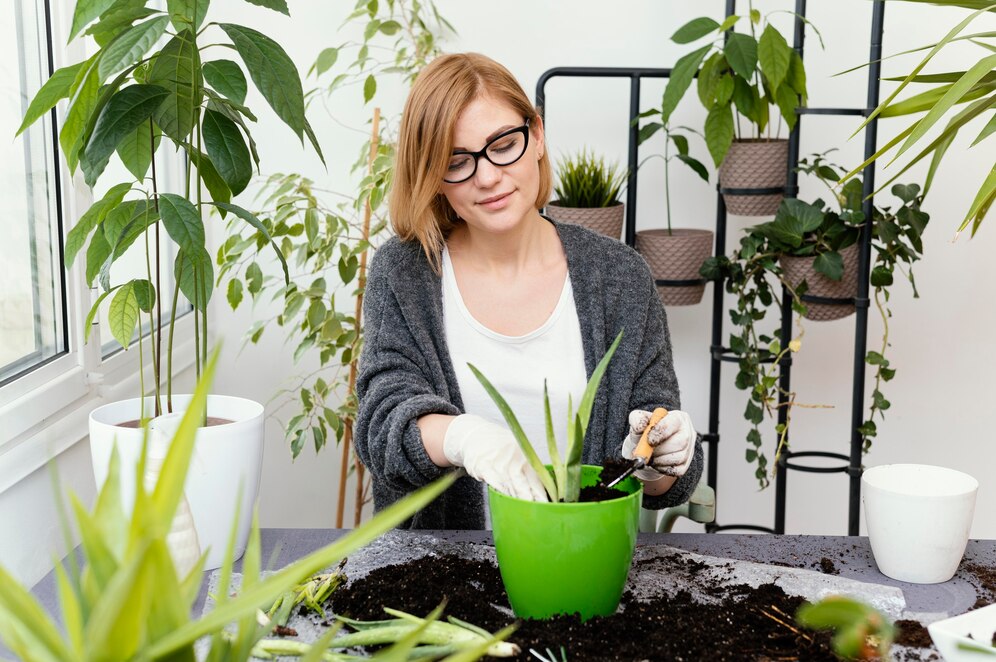Fertilizing indoor plants is crucial for their health and vitality. While they may not face the same environmental stresses as outdoor plants, indoor plants still rely on regular feeding to thrive. However, fertilizing indoor plants isn’t just about adding nutrients—it’s about understanding their specific needs and providing the right balance for optimal growth. In this guide, we’ll delve into expert tips on indoor plant fertilization to help you achieve flourishing greenery in your home.
Understanding the Basics of Indoor Plant Fertilization
Indoor plants typically have a more controlled environment compared to their outdoor counterparts. They receive consistent light and temperature conditions, which means their growth cycles may differ. To effectively fertilize indoor plants, it’s essential to grasp a few fundamental concepts:
- Types of Fertilizers: There are various types of fertilizers available, including liquid, granular, and slow-release formulations. Each type has its advantages depending on the plant’s needs and your preference for application frequency.
- Nutrient Requirements: Different plants have different nutrient requirements. For instance, foliage plants may need more nitrogen to support leaf growth, while flowering plants might benefit from a balanced or higher phosphorus fertilizer to promote blooming.
- Timing: Indoor plants generally need less fertilizer during their dormant periods, typically in late fall and winter. Spring and summer are periods of active growth when plants benefit most from regular feeding.
Expert Tips for Indoor Plant Fertilization
1. Choose the Right Fertilizer
Selecting the appropriate fertilizer is key to successful indoor plant care. Consider factors such as plant type (foliage vs. flowering), nutrient balance (N-P-K ratio), and the form of the fertilizer (liquid, granular, or sticks).
- Liquid Fertilizers: These are fast-acting and can be diluted to control the strength. They’re ideal for frequent feedings or plants that prefer more consistent moisture levels.
- Granular Fertilizers: These release nutrients slowly over time, reducing the frequency of application. They’re convenient for plants that require less frequent fertilization.
2. Understand Nutrient Needs
Different plants have specific nutrient requirements. Research your plant species to understand whether it needs more nitrogen (N), phosphorus (P), or potassium (K). Many commercial fertilizers display their N-P-K ratio prominently on the packaging to help you choose the right one for your plants’ needs.
3. Follow Dilution Instructions
When using liquid fertilizers, always follow the dilution instructions provided on the label. Over-fertilizing can lead to nutrient burn, where excessive salts accumulate in the soil, damaging roots and inhibiting plant growth.
4. Fertilize During Active Growth
Most indoor plants benefit from regular fertilization during their active growing season, typically in spring and summer. This is when they’re producing new leaves or flowers and need additional nutrients to support growth.
5. Monitor Plant Response
Pay attention to how your plants respond to fertilization. If you notice signs of nutrient deficiencies (e.g., yellowing leaves, stunted growth), adjust your fertilization schedule or type to meet their needs better.
6. Consider Organic Options
For those who prefer natural products, organic fertilizers offer a sustainable alternative. They release nutrients more slowly and improve soil structure over time, promoting overall plant health.
7. Use Fertilizer Sparsely on Newly Repotted Plants
When you repot indoor plants, they already receive a nutrient boost from fresh soil. Therefore, it’s wise to hold off on fertilizing for several weeks to prevent overstimulating delicate roots.
8. Flush Soil Periodically
To prevent salt buildup from fertilizers, periodically flush the soil with water. This process leaches excess salts out of the soil, reducing the risk of root damage and ensuring nutrients are readily available to plants.
9. Adjust Fertilization in Low-Light Conditions
Plants growing in low-light conditions may require less fertilizer since they’re not photosynthesizing as actively. Adjust your fertilization schedule accordingly to avoid nutrient buildup in the soil.
10. Rotate Fertilizers
To provide a balanced diet of nutrients, rotate between different types of fertilizers throughout the year. This approach ensures plants receive a variety of nutrients and minimizes the risk of nutrient deficiencies.
Conclusion
Mastering indoor plant fertilization requires a combination of knowledge, observation, and a bit of trial and error. By understanding your plants’ nutrient needs, choosing the right fertilizers, and adapting your approach based on their response, you can create an optimal environment for healthy, thriving indoor greenery. Remember, consistency and moderation are key—fertilize regularly during active growth periods, monitor your plants’ health, and enjoy the rewards of a lush indoor garden. With these expert tips, you’re well-equipped to cultivate flourishing plants that enhance your indoor space year-round.



